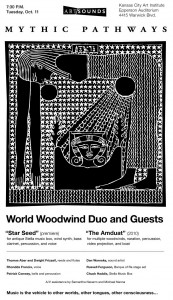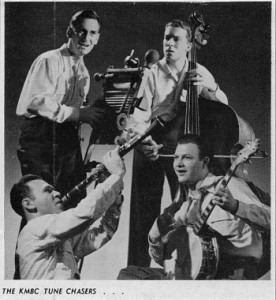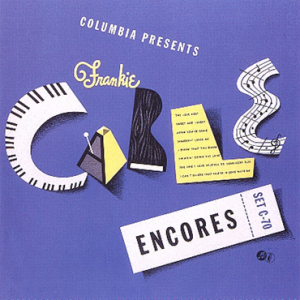 In the Arthur B. Church KMBC Radio Collection, there are a set of recordings plainly titled “Harry Jenks.” The sound of Harry Jenks usually falls between the realms of classical organ or jazzy piano, and there is little that can be inferred about the man based on his music outside of the fact that he was a talented musician. It wasn’t until an internet search revealed City Limits, a memoir written by Terry Teachout, that we meet the real Harry Jenks. Teachout reserves an entire chapter for the man that he describes as his friend, “a man of a singular sweetness of character [but] wholly lacking in personal ambition.”
In the Arthur B. Church KMBC Radio Collection, there are a set of recordings plainly titled “Harry Jenks.” The sound of Harry Jenks usually falls between the realms of classical organ or jazzy piano, and there is little that can be inferred about the man based on his music outside of the fact that he was a talented musician. It wasn’t until an internet search revealed City Limits, a memoir written by Terry Teachout, that we meet the real Harry Jenks. Teachout reserves an entire chapter for the man that he describes as his friend, “a man of a singular sweetness of character [but] wholly lacking in personal ambition.”
Teachout met Jenks through a personal friend while Jenks played at Shakey’s Pizza Parlor in Independence, Missouri. He had been a part of the Kansas City Jazz scene for many years, but as his eyesight started to fail he entered a sort of semi-retirement, only playing a few shows among old friends. Before their acquaintance, Jenks had a productive career in music. He served as the entertainment director of a troop-transport ship in the merchant marine during World War II. After the war, he worked for KMBC as a staff pianist until the station no longer employed musicians. He later became the organ player at the Royals Stadium and continued to play there until he could no longer read the scoreboard.
The strongest character trait that Harry Jenks had, according to Teachout, was his humility. Teachout admits that he himself struggled to understand why such a talented jazz musician like Harry Jenks never produced a single record. Jenks considered himself a “commercial” musician, able to play whatever the audience requested, but never pursued fame. In fact, he rejected it in many ways. Teachout describes an episode where he set up a local gig, but Harry pulled out three weeks before the performance claiming that he was having company and was too busy to make it.
It wasn’t until Harry Jenks’ old age that he and Teachout finally discussed making a record. Unfortunately, Jenks passed away from a bleeding ulcer before his first record could be made. In his book, Teachout remembers his good friend as a man of an older and more humble generation of artists, and wonders how many other brilliant musicians in cities like Kansas city were unknown, yet content. We can gladly say that are helping to preserve the memory of Harry Jenks and his jazz music for posterity’s sake.
Click here for a complete list of Harry Jenks’ music from our Arthur B. Church KMBC Radio Collection.
Chistina Tomlinson, KMBC Project staff/History (MA) student




